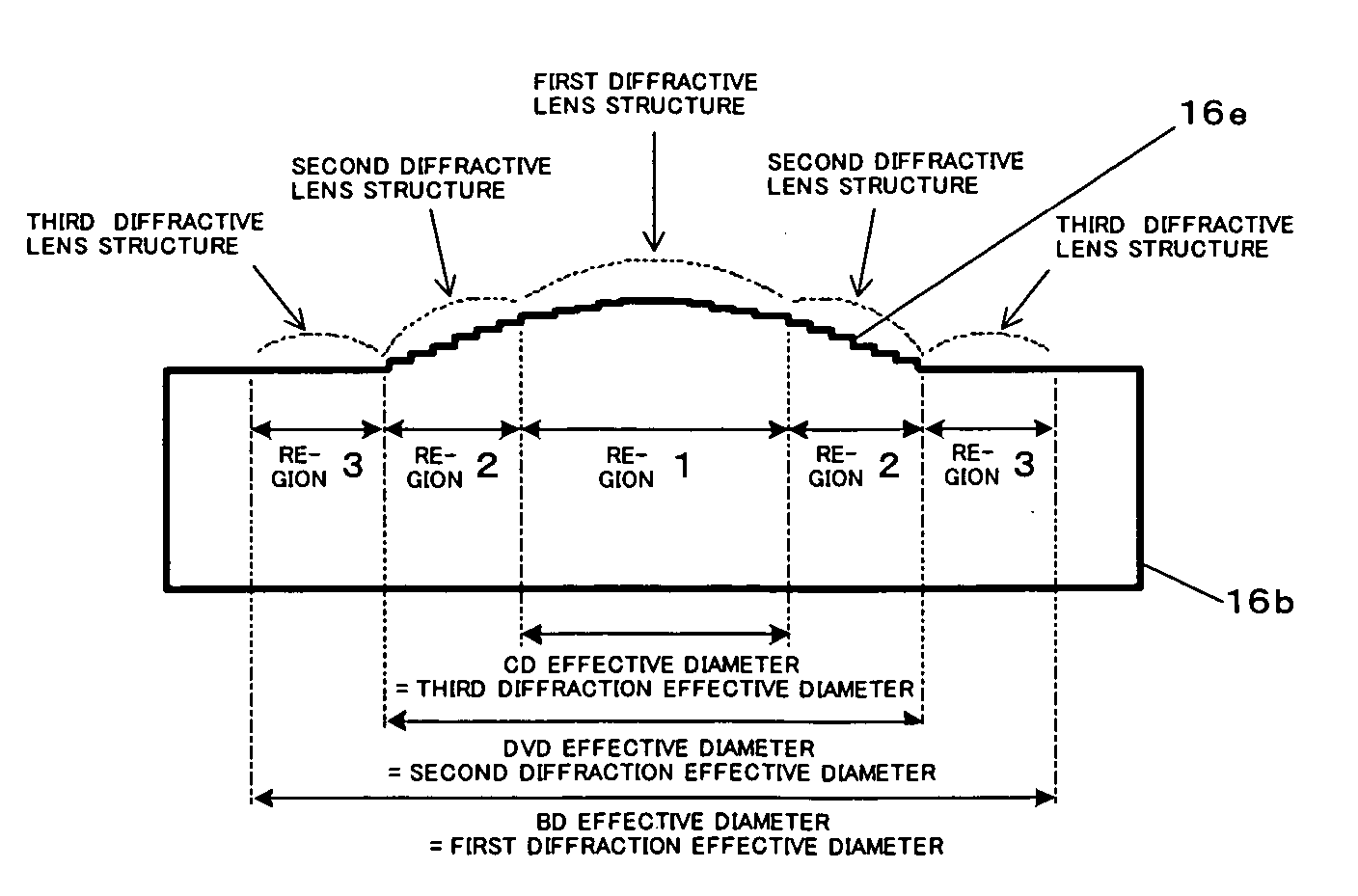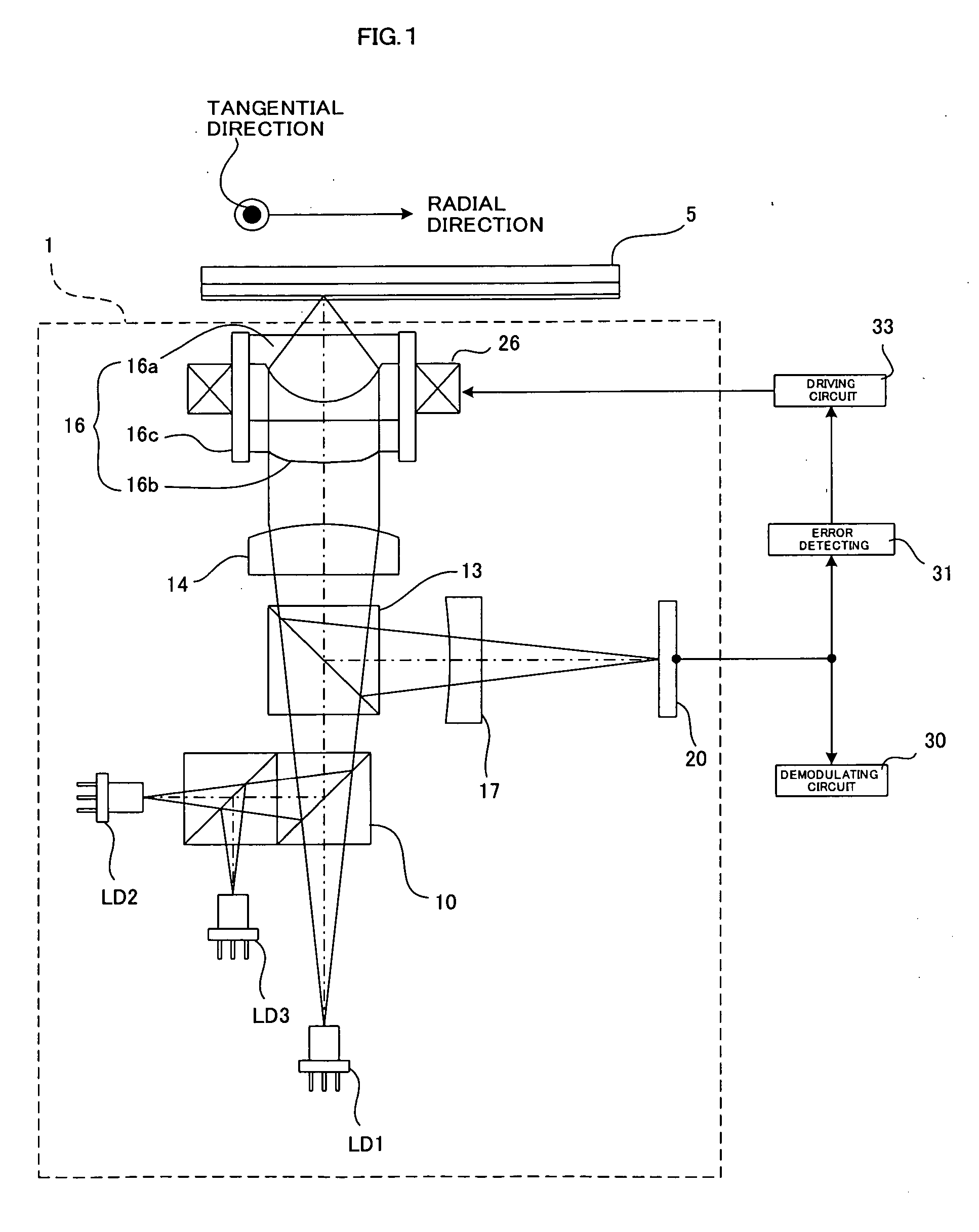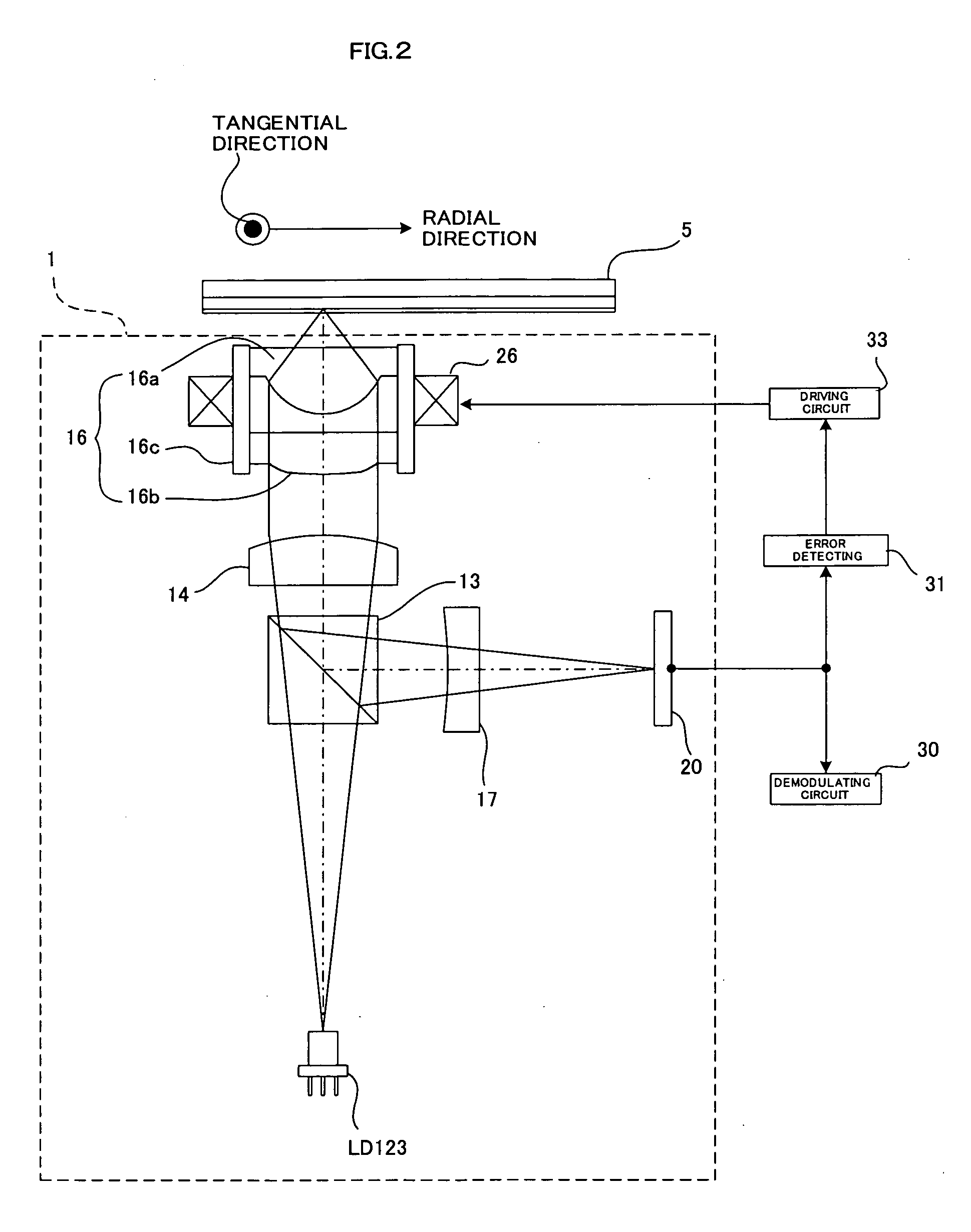Diffractive optical element, objective lens module, optical pickup, and optical information recording and reproducing apparatus
a technology of optical elements and pickups, applied in the field of optical elements, can solve the problems of disadvantageous reducing the size of the apparatus, affecting the performance of the apparatus, and affecting the compatibility of three or more kinds of recording media having different light source wavelengths, so as to improve the efficiency of the apparatus, prevent trouble, and simplify the optical path of the pickup
- Summary
- Abstract
- Description
- Claims
- Application Information
AI Technical Summary
Benefits of technology
Problems solved by technology
Method used
Image
Examples
example 1
[0330] In general, a diffractive lens structure used for the optical disc has a plurality of concentric minute phase steps, and controls the wavefront of light by use of diffraction of light by the phase steps. As a method of designing such a diffractive lens structure, the phase function method is used. In the phase function method, an infinitely thin phase object is assumed on a surface where the diffractive lens structure is formed, and the aberration is calculated by adding the phase, which is given through a phase function ψ(h) represented by the following equation, with respect to a light beam passing through the distance (height) h from the optical axis. Here, dor is a diffraction order, and λ0 is a designed wavelength. ψ(h)=dor2 πλ0∑idi·hi
[0331] Here, the phase function ψ(h) is arranged as the following equation, and Δ(h) is referred to as a diffractive lens function. Ψ(h)=dor·2 π·Δ(h)Δ(h)=1λ0∑idi·hi
[0332] The height from the optical axis of each of the plural...
example 2
[0400] Example 2 is also, like Example 1, a diffractive optical element that can record on and reproduce BD, the first optical data storage media; DVD, the second optical data storage media; and CD, the third optical data storage media; and combined with a double aspherical lens for BD. In addition, Example 2 is designed in consideration of the effect of chromatic aberration arising from slight wavelength variation of a light source.
[0401] In general, the wavelength of a light source such as a semiconductor laser that is used for an optical disc can be varied by temperature variation or power variation generated during recording and reproducing. As a result, the focal length of an objective lens varies, and spherical aberration occurs. The amount of wavefront aberration of the chromatic aberration arising from the wavelength variation increases with the numerical aperture of a lens. If the wavelength is varied rapidly with operating variation such as recording to reproducing or rep...
example 3
[0447] Example 3 is also, like Example 2, a diffractive optical element that can record on and reproduce BD, DVD and CD. In addition, the diffractive optical element of Example 3 is designed in consideration of the effect of the chromatic aberration due to the slight wavelength variation of the light source.
[0448] Table 23 illustrates the composition of the lens system and the design conditions for BD, DVD and CD in Example 3.
TABLE 23BDDVDCDLight source wavelength [nm]408660780Magnification000Numeric aperture0.850.650.50Effective diameter [mm]4.0003.2462.540Disc thickness [mm]0.10.61.2
[0449] In Example 2, the diffractive lens structures are formed on both surfaces of the diffractive optical element. However, in this case, since the diffractive lens structures are formed at both surfaces of the element, two high-precision molds including finephase steps are required, and thus the cost rises. Therefore, in Example 3, all diffractive lens structures are formed at a single surface as...
PUM
 Login to View More
Login to View More Abstract
Description
Claims
Application Information
 Login to View More
Login to View More - R&D
- Intellectual Property
- Life Sciences
- Materials
- Tech Scout
- Unparalleled Data Quality
- Higher Quality Content
- 60% Fewer Hallucinations
Browse by: Latest US Patents, China's latest patents, Technical Efficacy Thesaurus, Application Domain, Technology Topic, Popular Technical Reports.
© 2025 PatSnap. All rights reserved.Legal|Privacy policy|Modern Slavery Act Transparency Statement|Sitemap|About US| Contact US: help@patsnap.com



